The manufacturing industry has come a long way since the days of manual labor and arduous physical tasks. In today’s fast-paced world, innovation is at the forefront of every industry, and manufacturing is no exception. One of the most exciting technological advancements in recent years has been the development of exoskeletons and wearables. These cutting-edge devices are transforming the way manufacturing processes operate, enhancing productivity, safety, and efficiency in ways that were once only seen in science fiction. In this blog post, we’ll explore how exoskeletons and wearables are revolutionizing the manufacturing sector, with a focus on their numerous benefits.
The Rise of Exoskeletons
Exoskeletons are wearable devices that provide support and augmentation to the human body. They can be thought of as a fusion between man and machine, enabling workers to perform physically demanding tasks with less effort and strain. These exoskeletons come in various forms, from full-body suits to more specialized devices designed for specific tasks. Here’s how they’re making a significant impact on manufacturing processes:
Enhanced Strength and Endurance:
One of the most apparent benefits of exoskeletons is their ability to enhance a worker’s physical capabilities. These devices can multiply a worker’s strength, allowing them to lift heavy objects with ease. In manufacturing, where heavy lifting is often required, this can significantly reduce the risk of injuries and fatigue, ultimately improving productivity.
Reduced Fatigue and Injury Rates:
Manufacturing tasks can be physically demanding, leading to muscle fatigue and a higher risk of injuries, especially in repetitive jobs. Exoskeletons help reduce these issues by providing support to the wearer’s muscles and joints. This means that workers can sustain their energy levels for longer periods, leading to decreased fatigue and fewer workplace injuries.
Ergonomic Improvements:
Exoskeletons are designed with ergonomics in mind, ensuring that workers maintain proper posture during their tasks. This not only prevents immediate injuries but also reduces the likelihood of chronic musculoskeletal issues that can develop over time. Improved ergonomics contribute to a healthier and more comfortable working environment.
Enhanced Precision:
Some exoskeletons are equipped with sensors and feedback mechanisms that can enhance a worker’s precision and control. For example, in tasks requiring fine motor skills, exoskeletons can stabilize hand movements, leading to more accurate results and higher product quality.
Worker Retention and Satisfaction:
By providing employees with tools that reduce physical strain and make their jobs more comfortable, companies are more likely to retain skilled workers. Exoskeletons can also boost worker satisfaction by improving their overall working conditions, which can lead to increased productivity and a positive company culture.
The Role of Wearables
In addition to exoskeletons, wearables are playing a pivotal role in transforming the manufacturing industry. Wearable technology encompasses a wide range of devices, from smartwatches to augmented reality glasses. Here’s how they are benefiting manufacturing processes:
Real-Time Monitoring and Data Collection:
Wearable devices can collect and transmit real-time data on various aspects of manufacturing processes. For instance, workers can wear smart helmets or glasses equipped with cameras and sensors to monitor equipment performance, detect defects, and gather data on product quality. This data can be invaluable for quality control and process optimization.
Augmented Reality (AR) for Training and Guidance:
AR glasses are becoming increasingly popular in manufacturing, providing workers with on-the-spot information and guidance. Whether it’s helping technicians repair machinery or guiding assembly line workers through complex tasks, AR wearables enhance efficiency and reduce errors.
Improved Communication:
Effective communication is vital in manufacturing, especially in large facilities. Wearables can facilitate communication between workers and supervisors, allowing for quick responses to issues and minimizing downtime. Push-to-talk devices, for example, enable seamless communication across the shop floor.
Safety Enhancements:
Wearable devices can also improve worker safety by monitoring vital signs and detecting signs of fatigue or stress. In hazardous environments, wearables can send alerts and even trigger safety protocols in case of emergencies, potentially saving lives.
Inventory and Asset Management:
RFID (Radio-Frequency Identification) tags and wearable scanners are used to track inventory and assets in manufacturing facilities. This technology streamlines the supply chain, reduces the risk of stockouts, and ensures that materials are readily available when needed.
Exoskeletons and wearables are ushering in a new era of manufacturing, where human potential is augmented by cutting-edge technology.
These innovations are not just about enhancing productivity; they are also about prioritizing worker safety, reducing fatigue, and improving overall job satisfaction. As technology continues to evolve, we can expect even more advanced exoskeletons and wearables to enter the manufacturing sector, further revolutionizing the way we produce goods.
Manufacturers that embrace these technologies will undoubtedly gain a competitive edge in an ever-evolving market. By investing in exoskeletons and wearables, companies can create safer, more efficient work environments, boost productivity, reduce operational costs, and ultimately drive greater success in the manufacturing sector. The future of manufacturing is here, and it’s wearable.
At Rhino Tool House, we’re committed to staying at the forefront of manufacturing technology.
We offer a wide range of tools and equipment to help you make the most of these innovations. Contact us today to learn how we can assist you in integrating exoskeletons and wearables into your manufacturing processes. Together, we can shape a safer, more productive future for your business.

